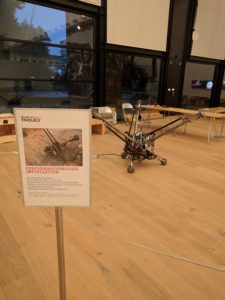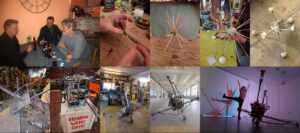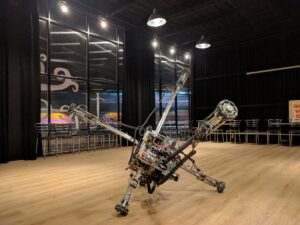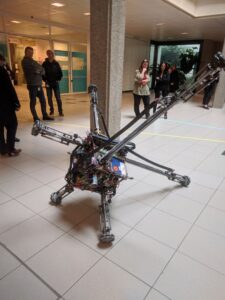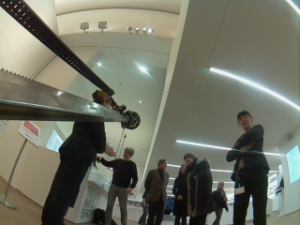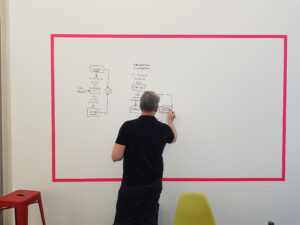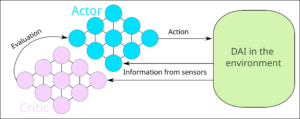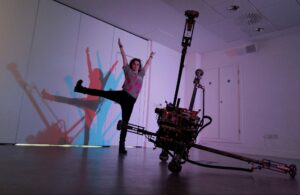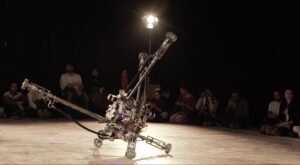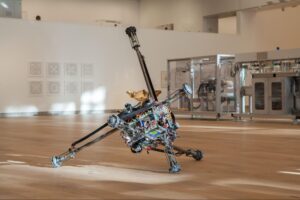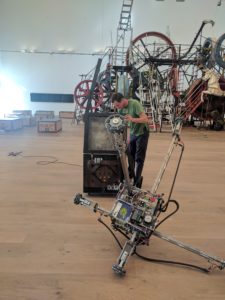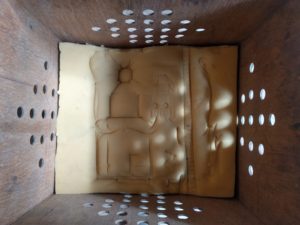Dai
Dai is an AI robot that is learning about art
Dai came into existence as a proposal for performanceprocess in Basel, 2017. The exhibition, initiated by the Centre culturel suisse – Paris, was intended as a subjective approach to swiss performance art from the 60’s to the present day. As we pondered the significance of past and present swiss performance artists and how we had been influenced in our own work by the likes of Jean Tinguely or Roman Signer we also started to wonder how the future might be shaped. We wanted to do something that would go beyond the present day in an attempt to glimpse into a possible future for performance art and look back on today from that hypothetical point of view. Technology has had an ongoing influence on art, from simple technology like paint tubes that led to impressionism to more sophisticated technology like computers that enabled digital art or the camera that evolved from science to art. As we researched what could influence performance art over the next 60 years we found that artificial intelligence was likely to play a major role. So we imagined a world where humans and machines coexisted. Performers might be humans or machines and they could be exploring very different aspects of the artform, individually or jointly pushing the boundaries of performance art in unimagined directions.
Our question from there on was ”How would it have begun?”
Our view of the future seemed to imply that these machines would have a creative process of their own and the capacity to dialogue with other artists. It also meant that they would have a sense of agency or maybe even awareness of being. This, we decided, indicated that the first AI (Artificial intelligence) performer would have had a body to experience the world as a reality and not just within some abstract virtual model and that this would eventually lead it to be aware of initiating its actions within the world. So we designed Dai, an artificial intelligence robot that was to begin its life as a dancer, exploring movements in space and time. We decided that a non-humanoïd body would be more interesting because it would force Dai to reinterpret any human-based source of inspiration, confronting it to its own corporeality. It would also encourage human spectators to appreciate it as an entirely new form of performer rather than a robot trying to mimic human art. So Dai was to start its journey towards becoming an artist by experiencing the world as a physical being.
After designing, building and programming Dai we set it on its journey of discovery. This process started in October 2017 at the Museum Tinguely in Basel during performanceprocess followed by a series of public performances in Geneva, Dublin, Delhi and Bangalore.
The first part of the project was about Dai self-learning how to move. This is where Dai discovered what movements it could do; a process comparable to an infant learning how to walk. We let it develop these movements by exploring its body and its environment as freely as possible, without any utilitarian objectives. These movements are what will become its choreographic vocabulary or baggage in the second part of the project: Dai – Total art –
